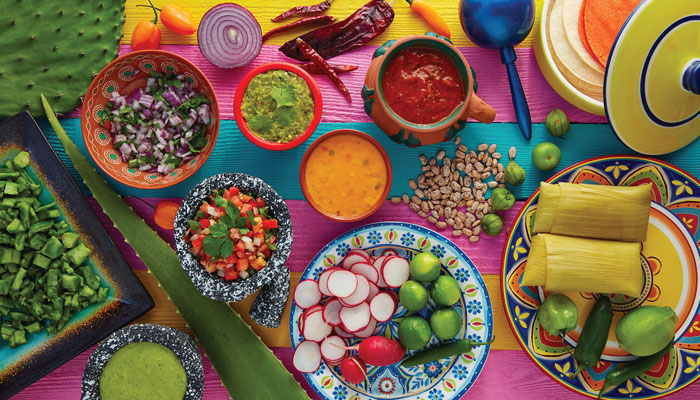Mexican dishes and flavours are among the most acclaimed and famous in the world. The vast array of colours, aromas and textures never fail to impress even the most discerning palates. Moving beyond the exquisite taste, these foods are the results of years and years of history and tradition – and the fusion of several cultures and traditions.
Mexican gastronomy is authentic and unique, since it integrates traditional pre-Hispanic cooking with ingredients like corn, chilli, prickly pear, beans, chocolate and vanilla with more European ingredients brought to Mexico during the conquest. The first descriptions of pre-Hispanic cuisine are registered in the General History of the Things of New Spain, compiled by Fray Bernardino de Sahagún, and it mentions the recipes that have been preserved and handed down by the indigenous cooks who worked in the Creole houses and religious convents.
Traditional Mexican cuisine was inscribed in 2010 on the Representative List of the Intangible Cultural Heritage of Humanity by UNESCO, who considered it “a comprehensive cultural model comprising farming, ritual practices, age-old skills, culinary techniques and ancestral community customs and manners”.
Here, we bring you the story behind five of Mexico’s most representative dishes:
Pozole
One of the dishes not to be missed in the commemoration of Mexico’s Independence Day on September 15 is pozole, which is sprinkled with oregano and served with toast and sour cream. In the Nahuatl language its name means foam. The origin of this dish is pre-Hispanic, and, in the past, it was eaten at ceremonies to honour the Mexican god Xipe Totec. Although the red pozole in the state of Jalisco is the most famous, the colour and the way it’s made varies depending on the region of Mexico. It can be green, red or white and made from chicken or pork, but whatever version you try, you’re sure that it will be delicious!
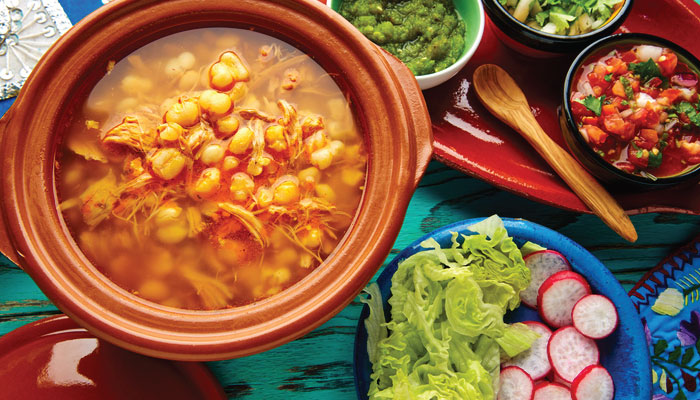
Mole
This dish is the king of Mexican cuisine. There are many legends about where mole originated, but we do know that it’s of pre-Hispanic origin, and the recipe has evolved over time, adding some European ingredients to the original method. The word “mole” comes from the Nahuatl mōlli, which means sauce. It’s a pretty complicated dish to prepare and requires many ingredients, making it one of the most original and exotic Mexican culinary treasures in the world. Although the Puebla style mole is the most famous, there are more than 40 documented varieties in the Encyclopedic Dictionary of Mexican Gastronomy. Some of them are spicier, while others are sweeter, although it’s said that there’s a mole to suit every taste.
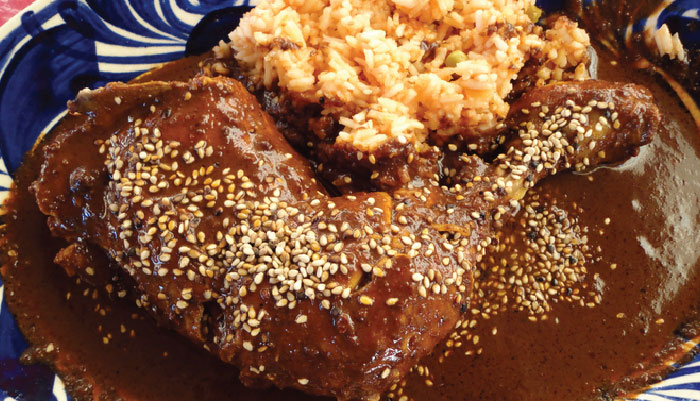
Tamales
This dish made with dough steamed in a corn husk or banana leaf is so famous and representative of the Mexican people that it even has its own day on February 2 each year. The word “tamal” comes from the Nahuatl word tamalli (meaning wrapped). Although the origin is still disputed among several countries in America, the fact remains that Mexico is the country with the tastiest and greatest variety of tamales. There’s a traditional tamale in many of the Mexican Republic’s states, for example in Michoacán; we have the corunda (served in a sauce with cream and salty cheese), and in Chiapas, there’s the chipilín. Regardless of the filling or the leaf used to wrap them, tamales, accompanied by a hot atole (cornflour drink), are frequently found in many traditional Mexican holidays and festivities.
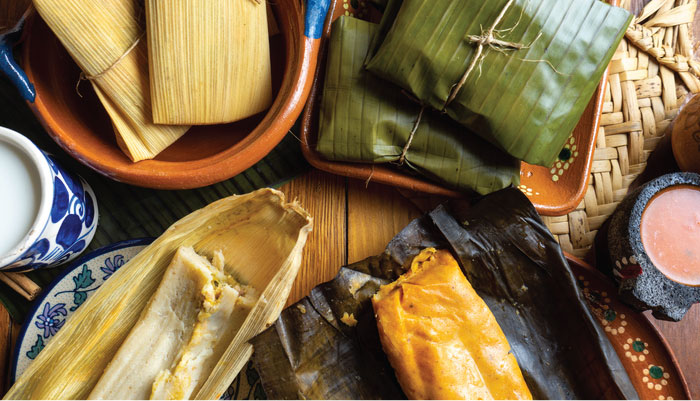
Enchiladas
The ingredients found in this delicious dish are two of the most representative of Mexico: chilli and the corn tortilla. Although cream and cheese are vital as a compliment, enchiladas can be made with a whole host of different sauces and filled with a variety of ingredients. They can be made with green, red, or mole sauce or marinated, and filled with cheese, chicken, or roast meat, and in some states, they’re served with fried potatoes and carrots in the sauce itself. Chilaquiles are another variant of the original classic recipe, which are corn tortillas cut in quarters and lightly fried, and are a popular dish for breakfast or brunch.
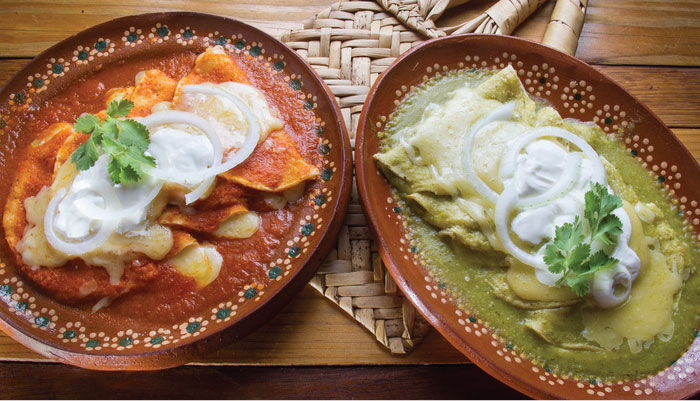
Chiles en nogada
Although there are different versions regarding the dish’s origin, according to the Universidad del Claustro de Sor Juana, they all date back to the middle of the 19th century, during the independence era. The ingredients are seasonal and also coincide with the time around September 15 and the “cry for independence”, the national holiday par excellence. The colours are also the same as those found on the Mexican flag: green from the Puebla chilli and parsley, white from the nogada sauce and red from the pomegranate seeds that adorn this culinary delicacy.
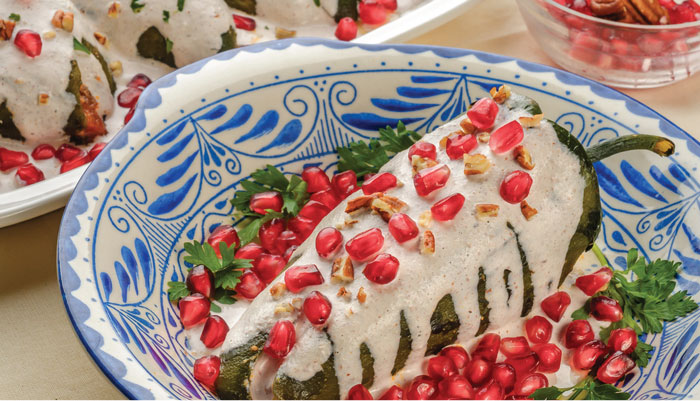
These are just five of the hundreds of traditional dishes that make up one of the richest, most diverse and artisanal gastronomies in the world.
Source of information: UNESCO



